#organicfarming
Text
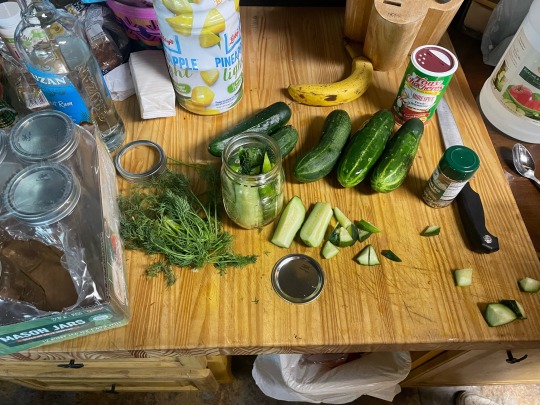
The cucumbers are ready pickle time
29 notes
·
View notes
Text
Randall Randy Konsker Guide The Top Benefits of Organic Farming You Need to Know

Organic farming has gained significant traction in recent years as consumers become increasingly conscious of their food choices and the impact of agriculture on the environment. Organic farming, characterized by the use of natural methods and avoiding synthetic pesticides and fertilizers, offers a range of benefits that extend beyond personal health. Randall Randy Konsker's guide we will explore the top benefits of organic farming and why it is gaining popularity worldwide.
1. Environmental Sustainability
One of the primary advantages of organic farming is its commitment to environmental sustainability. Organic farming methods prioritize soil health through practices such as crop rotation, cover cropping, and composting. By avoiding synthetic chemicals, organic farmers protect biodiversity, promote healthier ecosystems, and reduce the risk of soil erosion. This approach helps maintain the long-term fertility of the soil and minimizes the environmental impact of agriculture.
2. Reduced Chemical Exposure
Conventional farming relies heavily on synthetic pesticides and fertilizers to boost crop yields. However, the residues from these chemicals can end up in the food we consume, posing potential health risks. Organic farming eliminates or significantly reduces the use of synthetic chemicals, providing consumers with produce free from harmful residues. This reduction in chemical exposure has been linked to lower risks of certain health issues, making organic food an attractive choice for health-conscious individuals.
3. Improved Soil Health
Organic farming focuses on building and maintaining healthy soil. Practices such as crop rotation, cover cropping, and the use of organic matter like compost enhance soil structure, water retention, and microbial activity. Healthy soils support robust plant growth, increase nutrient content in crops, and contribute to overall ecosystem resilience. Additionally, the absence of synthetic fertilizers in organic farming prevents soil degradation, ensuring a sustainable and fertile environment for future generations.
4. Enhanced Nutritional Content
Several studies suggest that organic crops may have higher nutritional content compared to their conventionally grown counterparts. Organic farming practices, which prioritize soil health and diversity, often result in crops with increased levels of essential nutrients, antioxidants, and vitamins. This nutritional boost can positively impact human health and contribute to a well-rounded and balanced diet.
5. Support for Local Economies
Organic farming often occurs on a smaller scale and is more likely to be practiced by local farmers. Choosing organic products supports local economies by providing income and employment opportunities within communities. Additionally, the emphasis on local distribution reduces the carbon footprint associated with transporting goods over long distances, contributing to a more sustainable and resilient local food system.
6. Water Conservation
Organic farming practices prioritize efficient water management through techniques such as mulching, drip irrigation, and water-conserving cover crops. By minimizing water usage and runoff, organic farming helps conserve this precious resource. This is particularly crucial in regions facing water scarcity, as sustainable agricultural practices become essential for maintaining a reliable and resilient food supply.
Conclusion
The benefits of organic farming extend far beyond the individual consumer, reaching into the realms of environmental sustainability, public health, and local economies. Randall Randy Konsker says by choosing organic products, consumers play a vital role in supporting farming practices that prioritize the well-being of the planet and its inhabitants. As the demand for sustainable and ethically produced food continues to grow, organic farming stands as a beacon of a more conscientious and environmentally friendly approach to agriculture.
2 notes
·
View notes
Text

Beetroot is a very easy-to-grow vegetable that suffers from very few pests and diseases. The plant is generally easy to grow and is consistently ranked as one of the top 10 vegetables grown in home gardens. Beetroot is a cool-season vegetable crop.

This root veggie grows quickly and has many different varieties, which showcase deep red, yellow, or white bulbs of different shapes. It's nutritious, and you can eat both plant and root. This vegetable can survive frost and almost freezing temperatures, which makes it a great choice for northern gardeners and an excellent long-season crop.
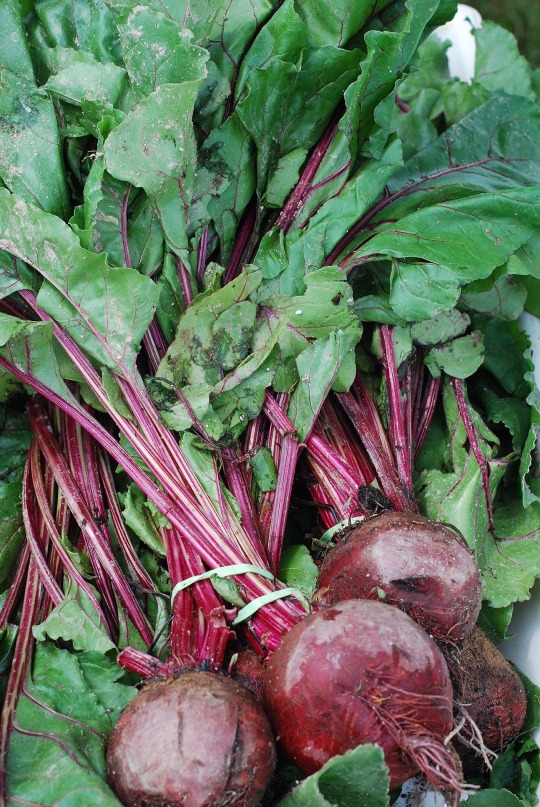
Keep reading; I'll teach you how to grow your own organic beetroot...
#gyo#lovegardening#gardening uk#gardenchat#gardening tips#gardening#garden#organic gardening#vegetable gardening#backyard#beetroot#beets#vegetables#vegetablegardening#growingvegetables#growingveggies#gardeningtips#organicgardening#organicfarming#growyourownfood#growyourownveggies#home and garden#gardenblr#gardencore#gardeners on tumblr#gardens#my garden#potted garden#urban gardening#vegetable garden
3 notes
·
View notes
Text
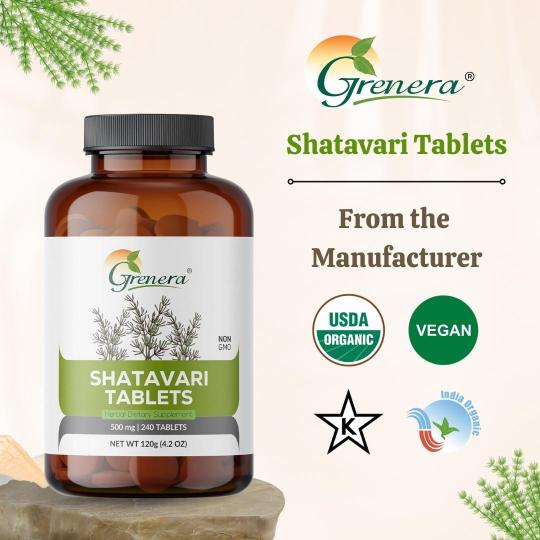
🌿 Discover the Power of Shatavari Tablets! 💪🌱
🌸 Boost Women's Health
🌿 Aid Digestion
🌟 Support Immunity
🌼 Balance Hormones
🌾 All-Natural & Holistic Wellness
📦 Shop Now for Your Well-Being
📚 Learn more on our website
👇
--------------------------------
To shop, Please Visit
www.greneraorganics.in
--------------------------------
WhatsApp - 99449 97512
--------------------------------
2 notes
·
View notes
Text
How To Grow Organic Lettuce Hydroponically
Growing lettuce hydroponically is an excellent way to produce fresh and healthy greens year-round. Here's a step-by-step guide on how to grow lettuce hydroponically:
Choose the Right Lettuce Variety: Select a lettuce variety suitable for hydroponic growing. Leafy and loose-leaf lettuces like Butterhead, Romaine, and Bibb are well-suited for this method.
Set Up the Hydroponic System: Choose a hydroponic system that fits your space and needs. Common types include nutrient film technique (NFT), deep water culture (DWC), or a vertical tower system.
Provide Proper Lighting: Ensure your lettuce plants receive adequate light. LED grow lights are ideal for hydroponic setups, providing the right spectrum and intensity for plant growth.
Nutrient Solution: Mix a hydroponic nutrient solution according to the manufacturer's instructions. Lettuce requires a balanced mix of nutrients, including nitrogen, phosphorus, potassium, and trace elements.
Planting: Start lettuce seeds in rockwool cubes or another hydroponic medium. Once seedlings have developed a few leaves, transfer them to the hydroponic system.
Maintain Water Levels: Keep the water level in the hydroponic system consistent. Lettuce prefers a slightly moist environment, but avoid waterlogging the roots.
pH Level: Regularly monitor and adjust the pH level of the nutrient solution. Lettuce thrives in a pH range between 5.8 and 6.5.
Temperature: Maintain the ideal temperature for lettuce growth, which is around 60-70°F (15-21°C). Avoid extreme heat, as it can cause bolting and bitterness in the leaves.
Air Circulation: Adequate air circulation is essential for healthy plant growth and to prevent mold or mildew issues.
Harvesting: Lettuce can be harvested as soon as the leaves reach a desirable size, usually 4-6 weeks after planting. Use clean scissors or a sharp knife to cut the leaves just above the base of the plant.
Succession Planting: To ensure a continuous supply of lettuce, practice succession planting by starting new seedlings every few weeks.
Clean and Maintain: Regularly clean and disinfect the hydroponic system to prevent algae or bacterial growth. Proper maintenance will promote healthy lettuce growth.
By following these tips and providing the right conditions, you can enjoy a steady supply of fresh and nutritious lettuce from your hydroponic garden.
Happy hydroponic gardening!
https://gardenguide4all.com/how-to-grow-organic-lettuce-hydroponically/
Read the full article
2 notes
·
View notes
Text

Hello lavender!
In a sea of lavender, I would like to take strokes of wonder.
(Fabrizio Caramagna)
Lavender is currently one of the undisputed stars here in Stella di Lemmen. It is in full bloom and offers its best in every sense of the word - beautiful, colorful, fragrant. It appears to us everywhere gently and discreetly, dressed in its various hues and shades: from white to pink, from lilac to purple to deep blue.
Pollinating insects adore it: bees in the lead, visiting it already early in the morning, but also bumblebees, staying until late in the evening! Those who approach a bush are immersed in a vibrant, unison buzzing...which is not at all dangerous. The insects are busy exclusively foraging and, if disturbed, simply change flower.
Lavender is a Mediterranean scrub bush that usually remains around a meter in diameter or so. On bare mountain slopes it reaches up to 1,400 meters above sea level, with smaller specimens that develop even more vivid colors.
It has about 30 species, some of them native to Italy such as Spica, Vera, Latifolia, Dentata and Stoechas. The latter, an elegant variety with showy insect wing-like bracts at the head of the flower, is the most fragrant and re-blooming of all.
All these species and many others are present on our farm, scattered everywhere and actively participating in the biodiversity and beauty of the entire agricultural organism; they are a even more exceptional presence as the plants are at ease in poor and stony soils and, once started, do not need a single drop of water except that which is bestowed by the sky!
Wherever they are found, with their hues and intense fragrance they bring joy, awe and serenity...until harvest time comes, usually in late July. We are almost there! The most suitable varieties will be stripped of their spiky inflorescences, which we will distill to extract the precious essence.
Already the ancient Egyptians employed lavender essential oil because of its antiseptic properties, while the Romans added it to bath water to perfume, but also to purify themselves and "wash" themselves of diseases - hence its name.
At Stella di Lemmen it will accompany us and comfort us throughout the winter: as a room fragrance, for a temple massage in case of headaches, in herbal teas and in the preparation of delicious Christmas cookies. It will also serve to ward off insects and protect our clothing in the closets as well as, at all times, bestow its unmistakable aroma upon us.
By transforming the light, lavender elaborates its healing, calming and relaxing power, which brings benefits in anxious states or nervous disorders, soothes the soul and conciliates sleep. Even its color says so: a true gift from heaven!
Ciao lavanda!
“In un mare di lavanda vorrei fare bracciate di meraviglia.”
(Fabrizio Caramagna)
La lavanda al momento è una delle indiscusse protagoniste qui a Stella di Lemmen. È nel pieno della fioritura ed offre il meglio di sé in tutti sensi - bella, colorata, profumata. Ci appare in ogni dove con gentilezza e discrezione, vestita delle sue diverse tinte e sfumature: dal bianco al rosa, dal lilla al viola fino al blu intenso.
Piace, - ah come piace! - agli insetti impollinatori: le api in testa, che la visitano già di prima mattina, ma anche i bombi, che rimangono fino a tarda sera! Chi si avvicina ad un cespuglio si immerge in un vibrante, unisono ronzio…per nulla pericoloso. Gli insetti sono occupati esclusivamente a bottinare e, se vengono disturbati, si limitano a cambiare fiore.
La lavanda è un cespuglio della macchia mediterranea che solitamente rimane intorno al metro di diametro o poco più. Sugli scarni declivi montani si spinge fino ai 1.400 metri di altitudine, con esemplari più piccoli che sviluppano colori ancora più vivaci.
Conta una trentina circa di specie, alcune delle quali originarie dell'Italia come la Spica, la Vera, la Latifolia, la Dentata e la Stoechas. Quest'ultima, elegante varietà dalle vistose brattee simili ad ali di insetto in capo al fiore, è la più profumata e rifiorente in assoluto.
Tutte queste specie e molte altre sono presenti nella nostra azienda, sparse in ogni dove e attivamente partecipi alla biodiversità e alla bellezza dell'intero organismo agricolo; ancor più eccezionale presenza in quanto le piante sono a loro agio anche in terreni poveri e sassosi e, una volta avviate, non necessitano di una sola goccia d'acqua se non quella elargita dal cielo!
Ovunque si trovino, con le loro tinte ed il loro profumo intenso apportano gioia, stupore e serenità...fin quando giunge l'epoca della raccolta, solitamente a fine luglio. Ci siamo quasi! Le varietà più adatte verranno private delle loro infiorescenze a spiga, che distilleremo per ricavarne la preziosa essenza.
Già gli antichi Egizi impiegavano l'olio essenziale di lavanda per via delle sue proprietà antisettiche, mentre i Romani lo aggiungevano all'acqua del bagno per profumarsi, ma anche per purificarsi e "lavarsi" dalle malattie - da qui il suo nome.
A Stella di Lemmen ci accompagnerà e conforterà durante tutto l'inverno: come aroma d'ambiente, per un massaggio alle tempie in caso di mal di testa, nelle tisane e nella preparazione di deliziosi biscotti natalizi. Servirà inoltre ad allontanare gli insetti e a proteggere i nostri indumenti negli armadi oltre che, in ogni momento, ad elargire il suo inconfondibile aroma.
Trasformando la luce, la lavanda elabora il suo potere curativo, calmante e rilassante, che arreca benefici negli stati ansiosi o nei disturbi nervosi, rasserena l’animo e concilia il sonno. Lo dice anche il suo colore: un vero dono del cielo!
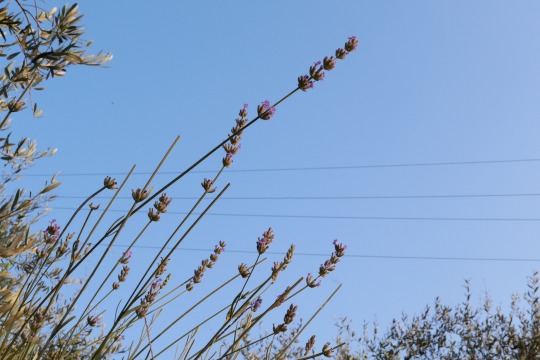

#farm#biodynamicfarming#biologico#nature#lavanda#lavender#aziendaagricolabiodinamica#aziendaagricolabiologica#biodiversity#biodinamica#organicfarming
2 notes
·
View notes
Text
instagram
#organicfood#organicfarming#healthyself#glutenfreefood#rice#foodislife#pure#navararice#kaaduorganics#Instagram
2 notes
·
View notes
Text
Blockchain in Agriculture and Food Supply Chain Market Forecast Suggests Sustained Growth Throughout the Forecast until 2029

The blockchain in Agriculture and food supply chain market is expected to grow at a CAGR of 43.76% from 2023 to 2029. This growth is being driven by a number of factors, including the increasing demand for food safety and traceability, the growing popularity of smart contracts, and the increasing adoption of blockchain by governments and businesses.
Blockchain is a distributed ledger technology that can be used to record transactions in a secure and transparent way. This makes it ideal for tracking food products from farm to fork, as it can help to ensure that they are safe and have been produced sustainably.
Smart contracts are self-executing contracts that are stored on the blockchain. These contracts can be used to automate payments and transactions in the food supply chain, which can help to reduce costs and improve efficiency.
Governments and businesses are increasingly recognizing the potential benefits of blockchain, and are starting to adopt it in their supply chains. For example, the United States Department of Agriculture (USDA) is currently working on a blockchain pilot program to track the movement of food through the supply chain.
The growth of the blockchain in agriculture and food supply chain market is expected to create new opportunities for businesses. These businesses will need to develop blockchain-based solutions that can help to improve food safety, traceability, and efficiency.
The following are some of the benefits of using blockchain in the agriculture and food supply chain:
Improved food safety: Blockchain can help to track food from farm to fork, which can help to ensure that it is safe and has been produced sustainably. This is because blockchain is a tamper-proof ledger that records all transactions in chronological order. This makes it very difficult to counterfeit or adulterate food products.
Increased traceability: Blockchain can help to track the movement of food through the supply chain, which can help to improve traceability. This is important for both consumers and businesses, as it allows them to know exactly where their food comes from.
Reduced costs: Blockchain can help to reduce costs in the food supply chain by automating payments and transactions. This is because smart contracts can be used to automate these processes, which can save time and money.
Improved efficiency: Blockchain can help to improve efficiency in the food supply chain by streamlining processes and reducing paperwork. This can help to speed up the movement of food through the supply chain, which can lead to increased profits.
Overall, the blockchain in agriculture and food supply chain market is a promising market with a lot of potential. As the market matures, we can expect to see even more innovative applications of blockchain in this sector.
Here are some of the challenges that the blockchain in agriculture and food supply chain market faces:
The lack of standardization: There is currently no single standard for blockchain in the agriculture and food supply chain market. This can make it difficult for businesses to adopt blockchain and for different systems to interoperate.
The lack of trust: Some businesses and consumers may be hesitant to adopt blockchain because they do not trust the technology. This is because blockchain is a relatively new technology, and there is still some uncertainty about how it will be used in the future.
The high cost: The cost of developing and deploying blockchain solutions can be high. This can be a barrier for some businesses, especially small businesses.
Despite these challenges, the blockchain in agriculture and food supply chain market is expected to grow significantly in the coming years. The market is expected to be driven by the increasing demand for food safety and traceability, the growing popularity of smart contracts, and the increasing adoption of blockchain by governments and businesses.
#farming#blockchain#agriculture#agoverse#organicfarming#sustainableagriculture#signup#blockchaintechnology#futurefarming#sustainable#news#trendingpost#usa#USA
3 notes
·
View notes
Text

BUDVS BHAVNAGAR SPNF PRODUCER COMPANY LIMITED
BUDVS BHAVNAGAR SPNF PRODUCER COMPANY LIMITED (FPO) in collaboration withATMA project at Chitravav village of Umrala taluka, gave awareness to the
farmers about the benefits of natural farming and Making of Jivamrit withpractical understanding. Also the benefits of farmers joining FPO were alsodiscussed.
2 notes
·
View notes
Text

Weingartenpfirsichhof
www.weingartenpfirsichhof.com
TRUTH Bitterzitronenlikör
Renate Egger and Wilhelm Roseneder
Source: weingartenpfirsichhof.com
#renate egger#wilhelm roseneder#photography#Vineyardpeachfarm#Truttendorf/Carinthia#Grafenstein/Carinthia#Weingartenpfirsichhof#landscape gardening#Bitterzitrone#Bitterlemon#organicfarming#Biologische Landwirtschaft#Carinthia#Austria#landscape#TRUTH#Bitterzitronenlikör
6 notes
·
View notes
Text


Tomato inspection. Mikey said things are looking good
#garden#farmcore#organicfarming#kitty#farmblr#organic#tomatoes#cherry tomatoes#no till#organicfood#farm animals
10 notes
·
View notes
Text

It is evident that nutritious food keeps us healthy, and a major part of our food grows on soil. It may be hard to believe, but the health of soil does have an impact on your health. Soil is a major source of nutrients and as crops are grown on soil, it passes on these nutrients to the crops. Therefore, the nutrition level of the crops is also influenced by the soil. Besides, soil also acts as a natural filter that removes contaminants from water. So, the health of soil determines how healthy our food will be.
Read More: https://bharatvarshnaturefarms.com/how-does-the-health-of-soil-impact-your-health/
#bestPlantNurseryinNagpur#BharatvarshNatureFarms#BharatvarshPlantNurseryInNagpur#gardeningtips#organicfarming
3 notes
·
View notes
Text
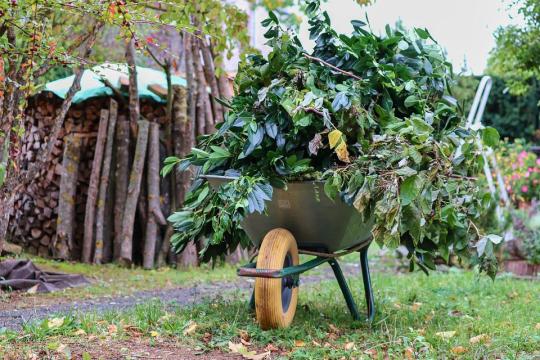
Tasks to do now in order to make next year's Organic Garden even better👨🌾
These tasks will be shared one by one, to make it simple and easy for all to understand, and discuss our organic gardening knowledge!
1. Go ahead and clean up your garden before it gets too cold. Once the plants are dead, remove them as soon as possible. As fungal disease and many garden pests will overwinter in the dead leaves and stems.
I encourage you to share your organic adventure and knowledge so don't be shy!!!
#gardening#gardeners#gardenerslife#gardenersofinstagram#gardenersworld#organicgardening#organicfarming#organicgardener#fall#fallgarden#fallgardening#gardeningtips#gardeningtipsforbeginners#garden#gardening tips#vegetable gardening#organic gardening#backyard#gardenchat#gardening uk#gyo#lovegardening#gardeners on tumblr#gardenersofig
24 notes
·
View notes
Photo

How important is Phosphorus for Agriculture? Read the post to know more!
#phosphorus#soil#land#plantnutrient#nourishment#plantgrowth#plants#plantlife#farmingtips#farmingtip#crops#trees#agricultureworld#agriculturelife#agricultural#farming#farmlife#organicfarming#agriculture#agriculturaorganica#organic#uyirorganicfarmersmarket
2 notes
·
View notes
Photo

奄美大島の在来種、そら豆に花が咲きました。甘みが強くて旨いらしい。今から楽しみ。 #奄美大島 #在来種 #伝統野菜 #小ぶり #開聞岳 #ユーファーム #そら豆 #有機栽培 #有機野菜 #有機農業 #organicveggies #organicfarming #broadbeans #kaimondakevolcano #kaimondake #flowers #Ibusuki #Kagoshima #kaimon (ユーファーム Ufarm) https://www.instagram.com/p/Coo2SwQP0gw/?igshid=NGJjMDIxMWI=
#奄美大島#在来種#伝統野菜#小ぶり#開聞岳#ユーファーム#そら豆#有機栽培#有機野菜#有機農業#organicveggies#organicfarming#broadbeans#kaimondakevolcano#kaimondake#flowers#ibusuki#kagoshima#kaimon
3 notes
·
View notes
Text
Best Organic Nutrients for Plant Growth - Nova Drip
Kay Bee Bio Organics NOVA DRIP is a Specialized product formulated by using natural seaweed extracts containing natural and essential nutrients required for plant growth. It has the ability to strengthen the roots and enhancement white roots.

#nova#drip#farm#farms#farming#farmings#agri#agro#agriculture#sustainability#sustainable#organics#organicfarming#food#fruits#trees#plants#gardening#gardens#india#usa#uk#canada#europe#germany#tumb#tumblr#kb#kaybeebio#kaybee
2 notes
·
View notes